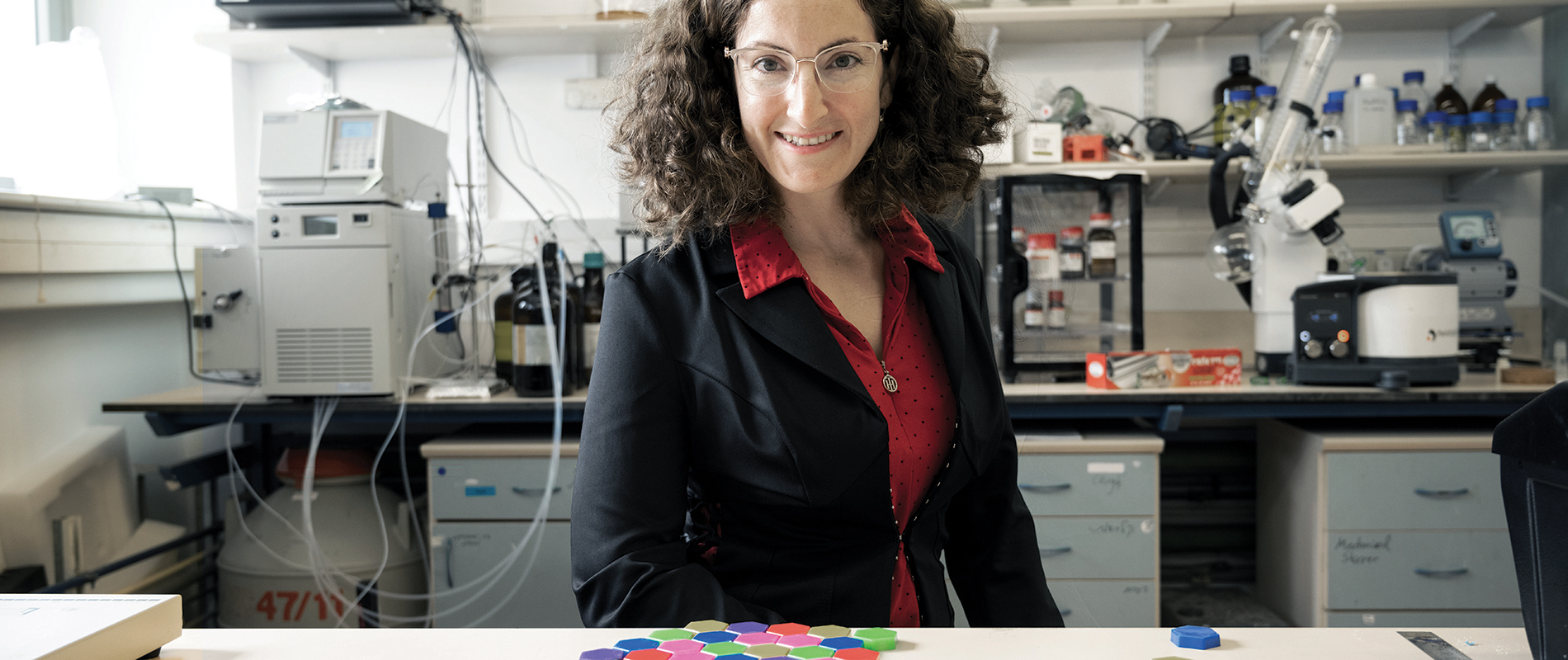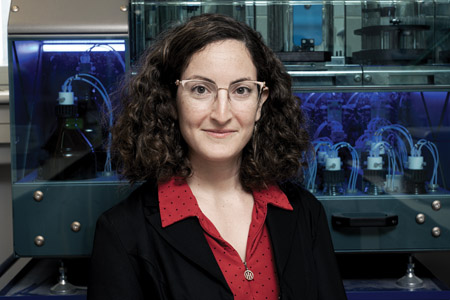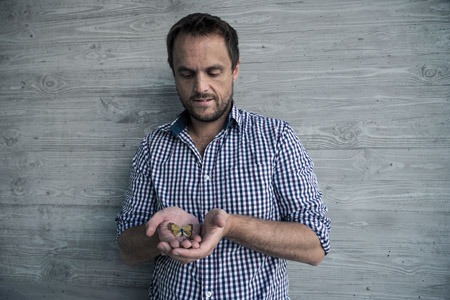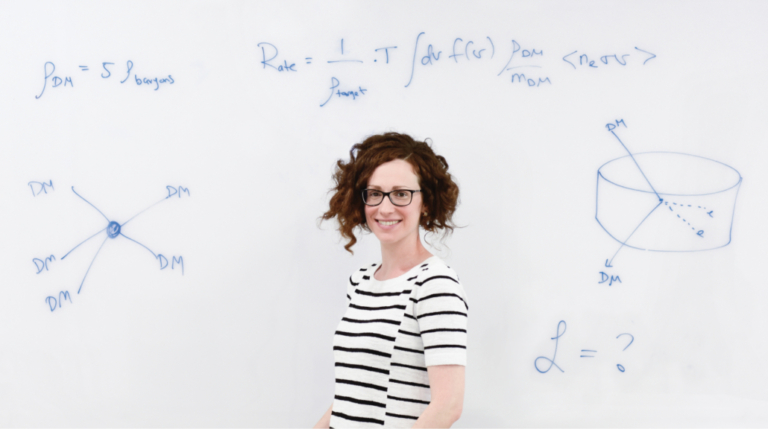In 2016, after winning a NASA postdoctoral fellowship, Frenkel-Pinter went to the Georgia Institute of Technology’s Center for Chemical Evolution in Atlanta. As a team leader, she researched how primordial molecules formed and interacted on pre-biotic Earth, before there were any enzymes to catalyze reactions. “Before biology there were just molecules and chemistry,” she says, “and there were forces that led to the selection of some molecules over others from a very messy soup.”
Untangling the mysteries of chemical evolution is much more challenging than understanding biological evolution, according to Frenkel-Pinter. “With biological evolution we can look at how species evolved over time by sequencing their DNA and looking at fossils,” she says. “But I’m asking what happened before life started? How did we get from that messy soup to the structure and function of life as we know it?”
Addressing those questions involved thinking about whether alternative forms of life could have arisen instead. Is there something special about the subclass of amino acids that founded biology? Could other, similar molecules have given rise to a different form of life had things gone their way? Frenkel-Pinter and her colleagues discovered that a subset of the twenty amino acids found in today’s proteins are able to form peptides more readily in the absence of enzymes than non-proteinogenic amino acids. “Every molecule has an intrinsic reactivity to form larger molecules, and the amino acids we have in today’s proteins do that better,” she says. “The best molecules won.”
As these molecules grew more complex, other selection forces came into play based on the larger molecules’ tendency to form stable three-dimensional structures. This stability helped the molecules last longer and increased their tendency to undergo chemical reactions with other molecules, which could then produce new compounds with new functions. These insights offered a fresh perspective. “For the first time,” says Frenkel-Pinter, “we were able to understand the selection forces that shaped protein evolution from a chemical point of view.”
Next, she looked at whether interactions between different kinds of molecules were important for chemical evolution. There has been long-standing debate within the origin-of-life field about which molecules came first. Was it only RNA? Only peptides? Or a mixture of both? It’s a bit of a chicken-or-egg problem because RNA is needed to make proteins, but proteins are also needed to make RNA. What Frenkel-Pinter found in her experiments was that because primordial RNA and primordial peptides interact to stabilize each other, the chicken and egg could have appeared alongside one another and worked in tandem to improve each other. “It was never a dilemma, because they evolved together,” she says. “It was co-evolution, just like in biology.”
This does not mean that Frenkel-Pinter and her colleagues have fully solved all of these origins-of-life mysteries. The question of which molecules took the lead — just one kind, such as RNA or peptides, or a more chaotic system — remains open. “But if we understand the process,” she says, “we can learn a lot.”








